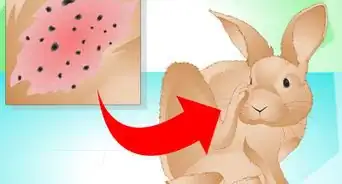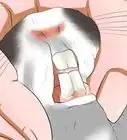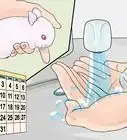This article was co-authored by Melissa Nelson, DVM, PhD. Dr. Nelson is a Veterinarian who specializes in Companion and Large Animal Medicine in Minnesota, where she has over 18 years of experience as a veterinarian in a rural clinic. She received her Doctor of Veterinary Medicine from the University of Minnesota in 1998.
This article has been viewed 89,098 times.
Rabbits can be wonderful pets that add joy and fun to your life. When you own rabbits, it's important to keep them healthy so they can provide you with this joy for years to come. This requires, among other things, that you keep them parasite-free. Mites are a parasite that can infect your rabbit's ears or skin. They can cause itching and infection for your rabbit and cannot be seen with the naked eye. Because of this, it is important to keep an eye out for the symptoms of a mite infection and use a combination of at-home and veterinary methods to get rid of them.
Steps
Beginning Treatment at Home
-
1Isolate the rabbit. Mites that infect the bodies and ears of rabbits are very contagious, so you need to move an infected rabbit away from other rabbits. Give it its own cage where it can recover from its infection alone.[1]
- Since treatment for this infection can take several weeks, be sure to place your infected rabbit somewhere where it can be comfortably housed for a long period of time. For example, put the rabbit in an extra cage in an area away from other rabbits.
-
2Throw out your rabbit's bedding. When your rabbit has a mite infection, its bedding will also be infested with mites that can then reinfect the rabbit after treatment. Because of this, it's a good idea to dispose of anything that you can that the rabbit has come into contact with, including toys that could be contaminated.[2]
- Put your rabbit on new bedding when it is recovering in isolation. Then, when treatment is complete, put it on yet another round of new bedding. This will ensure that it does not get reinfected.
- If your rabbit sleeps on disposable bedding, such as wood shavings or shredded paper, change it out every day during treatment. Change this type of bedding at least once a week when your rabbit is not infected.
- If your rabbit sleeps on a cloth bed, replace it with a new one. Vacuum the new bed and treat it with a rabbit-safe pesticide as often as recommended by your vet during treatment, then dispose of it and replace it again once treatment is over.
Advertisement -
3Clean the rabbit's surroundings thoroughly. If you have a rabbit in your home that has gotten a mite infection, then you need to clean all of the surfaces that it typically comes into contact with. Vacuum all soft surfaces and then use an anti-parasitic dust on them. These dusts, available at most large pet stores, are usually sprinkled on the surface and then vacuumed up after a specific amount of time.[3]
- Make sure that the treatment that you buy is safe for rabbits. It should state this on the package.
- Do not shampoo or steam-clean your carpets to try and get rid of mites. This does not necessarily eliminate the mites and actually creates an ideal environment for them.
-
4Do not remove scabs. The scabs that are created by ear mites can be very painful and sensitive for rabbits. Removing them is typically very painful and does not aid in the treatment of the infection.[4]
- With proper treatment, the scabs will gradually disappear after the mites have been eliminated. Waiting for them to release on their own allows the skin to heal and does not create open wounds that could become infected further.
-
5Put oil or petroleum jelly on infected ears. The mites that infect a rabbit's ears can be temporarily controlled by suffocating them with petroleum jelly or an oil, such as mineral or baby oil. Cover the entire inner surface of the ear with oil or petroleum jelly twice a day, making sure to avoid getting it into the animal's ear drum.[5]
- This is not a replacement for veterinary care. It just will keep the infection at bay while you are waiting for the rabbit to be seen by a veterinarian.
- To treat the ears, you will need to get ahold of the rabbit. Try wrapping it tight in a towel or blanket to keep it still. It is easier to have 2 people to do this because the rabbit will try to run.
- Always support your rabbit’s hind legs while you are holding it to prevent it from kicking. Violent kicking can severely injure your rabbit’s back.
- If you are using petroleum jelly, it’s a good idea to wear gloves while you apply it. This will allow you to keep your fingers clean and you will not come into contact with the scabs.
-
6Be careful not to damage the rabbit's eardrum. Apply the oil or jelly in small amounts. Apply enough so that you can rub it on the rabbit's ear, but be careful not to get it close to the eardrum, as this can really hurt your pet.
- Don't shove you finger down the rabbit's ear. Be careful and apply gently away from tender areas of the ear.
Getting Veterinary Treatment
-
1Seek veterinary treatment. It is most effective and efficient to have skin mites treated by a veterinarian. Your veterinarian will be able to test your animal for the presence of mites and give you a specific diagnosis. If your rabbit tests positive for mites, the veterinarian will then be able to prescribe a medication that will be safe and effective for the animal's specific infection.
- In general, mite infections are easy to treat. However, it's best to seek out veterinary treatment as soon as possible so that the infection can be eliminated quickly and the animal experiences as little discomfort as possible.
- In many cases, the veterinarian will be able to identify the mites by simply looking closely at the infected area. If there is any question about what the infection is after a visual examination, your veterinarian will take a skin scraping in the infected area and will look at it under a microscope for confirmation.[6]
-
2Give your rabbit an anti-parasitic medication. If your rabbit is diagnosed with mites, your veterinarian will prescribe a medication to eliminate the infection. In most cases, your vet will prescribe ivermectin, Revolution, or Stronghold for your rabbit. All of these are safe and popular types of medicine to use.[7]
- These medications can be applied topically to rabbits. Follow your veterinarian's suggestions for treatment.
-
3Repeat the treatment as directed until the mites are gone. While your vet will likely give your rabbit its first treatment, it will be your responsibility to continue treatment for several weeks. This will entail applying the anti-parasitic that your veterinarian has prescribed and watching the infection for signs that it is dissipating.[8]
- Be sure to follow your veterinarian's directions for how often and how long to apply the anti-parasitic medication. The treatment should be designed so that you will eliminate not only the currently active mites but also mites that could hatch in the coming days.
-
4Consider alternate treatments if mites are not eliminated. If applying a common anti-parasitic does not work on your rabbit, consult with your veterinarian once again. They may be able to suggest another type of treatment that could work for your rabbit.[9]
- If a topical treatment doesn't work for your rabbit, then your veterinarian may suggest a lime sulfur dip or an injection of ivermectin directly into the skin. Ivermectin needs to be injected twice to be effective, so this treatment will likely require 2 visits to the veterinarian.
- While anti-parasitic dips or baths are an option, these treatments are extremely stressful for rabbits. Only consider dips and baths as a last resort.
Identifying a Mite Infection
-
1Look for signs that the rabbit's skin is irritated. Itching is a way that the rabbit deals with the irritation caused by mites on its skin or in its ears. So, if your rabbit is scratching itself incessantly, that is a sign that it may have mites.
-
2Inspect the rabbit's coat for flaking or irritated skin. Look at the surface of the rabbit's skin if you have noticed it has been scratching a lot or if you are doing a general health assessment. Pull areas of the rabbit's fur apart gently so you can see the skin. Look for flaking, irritation, or thickening of the skin, as these can be signs that the animal has a mite infection.[12]
- The mites tend to infect the rear ends of rabbits, so look for irritation there.
-
3Look for dandruff on the surface of the fur. If the mite infection is advanced, it can cause the skin to flake off excessively. Once it flakes off it will move to the surface of the fur and look like dandruff.[13]
-
4Identify areas of fur loss. In cases of severe mite infections, your rabbit may lose areas of its fur. These areas of fur loss are typically located in the most common areas of infection: the hindquarters, neck, and the back.[14]
-
5Look for scabs in the ears. Ear mites can take hold in your rabbit's ear canal. If they are allowed to reproduce there, they will eventually create scabbing of the inner surface of the ear. To look for this scabbing, hold your rabbit still and pull the ear back gently so you can look down the ear canal. [15]
- The scabs associated with ear mites tend to be reddish-brown and crusty.
Expert Q&A
Did you know you can get expert answers for this article?
Unlock expert answers by supporting wikiHow
-
QuestionCan rabbit mites live on humans?
 Melissa Nelson, DVM, PhDDr. Nelson is a Veterinarian who specializes in Companion and Large Animal Medicine in Minnesota, where she has over 18 years of experience as a veterinarian in a rural clinic. She received her Doctor of Veterinary Medicine from the University of Minnesota in 1998.
Melissa Nelson, DVM, PhDDr. Nelson is a Veterinarian who specializes in Companion and Large Animal Medicine in Minnesota, where she has over 18 years of experience as a veterinarian in a rural clinic. She received her Doctor of Veterinary Medicine from the University of Minnesota in 1998.
Veterinarian
-
QuestionCan you see mites on rabbits?
 Melissa Nelson, DVM, PhDDr. Nelson is a Veterinarian who specializes in Companion and Large Animal Medicine in Minnesota, where she has over 18 years of experience as a veterinarian in a rural clinic. She received her Doctor of Veterinary Medicine from the University of Minnesota in 1998.
Melissa Nelson, DVM, PhDDr. Nelson is a Veterinarian who specializes in Companion and Large Animal Medicine in Minnesota, where she has over 18 years of experience as a veterinarian in a rural clinic. She received her Doctor of Veterinary Medicine from the University of Minnesota in 1998.
Veterinarian
-
QuestionWhat is Cheyletiella in rabbits?
 Melissa Nelson, DVM, PhDDr. Nelson is a Veterinarian who specializes in Companion and Large Animal Medicine in Minnesota, where she has over 18 years of experience as a veterinarian in a rural clinic. She received her Doctor of Veterinary Medicine from the University of Minnesota in 1998.
Melissa Nelson, DVM, PhDDr. Nelson is a Veterinarian who specializes in Companion and Large Animal Medicine in Minnesota, where she has over 18 years of experience as a veterinarian in a rural clinic. She received her Doctor of Veterinary Medicine from the University of Minnesota in 1998.
Veterinarian
Warnings
- Never use any anti-parasitic that contains permethrin or fipronil to get rid of parasites on rabbits. These medications can be toxic to rabbits and may cause death.[16]⧼thumbs_response⧽
References
- ↑ https://njaes.rutgers.edu/pubs/fs1183/
- ↑ https://njaes.rutgers.edu/pubs/fs1183/
- ↑ http://www.medirabbit.com/EN/Skin_diseases/Parasitic/furmite/fur_mite.htm
- ↑ http://www.rabbit.org/journal/4-9/skin.html
- ↑ https://riseandshinerabbitry.com/2012/10/30/ear-mites-causes-and-remedys/
- ↑ http://www.rabbit.org/journal/4-9/skin.html
- ↑ http://www.medirabbit.com/EN/Skin_diseases/Parasitic/furmite/fur_mite.htm
- ↑ http://www.rabbit.org/journal/4-9/skin.html
- ↑ http://www.peteducation.com/article.cfm?c=18+1803&aid=1597
- ↑ http://www.rabbit.org/journal/4-9/skin.html
- ↑ https://njaes.rutgers.edu/pubs/fs1183/
- ↑ http://www.peteducation.com/article.cfm?c=18+1803&aid=1597
- ↑ http://www.peteducation.com/article.cfm?c=18+1803&aid=1597
- ↑ http://www.medirabbit.com/EN/Skin_diseases/Parasitic/furmite/fur_mite.htm
- ↑ http://www.rabbit.org/journal/4-9/skin.html
- ↑ http://myhouserabbit.com/rabbit-health/treating-your-pet-rabbit-for-fleas/
About This Article
To get rid of mites on your rabbit, apply petroleum jelly or baby oil to the infected areas to smother the mites. However, avoid applying the oil or jelly in large amounts to its ear as this can damage the ear drum. Then, take your rabbit to the vet for a prescription medication. Once you bring your pet home, apply the anti-parasitic cream to the infected areas for several weeks. Additionally, throw out any bedding and toys that the rabbit has been in contact with to prevent it from getting reinfected. To find out more about alternative treatments, including injections and anti-parasitic baths, keep reading!
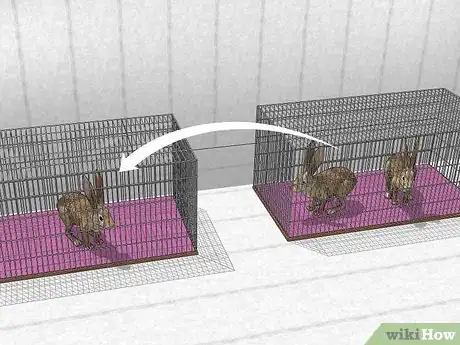
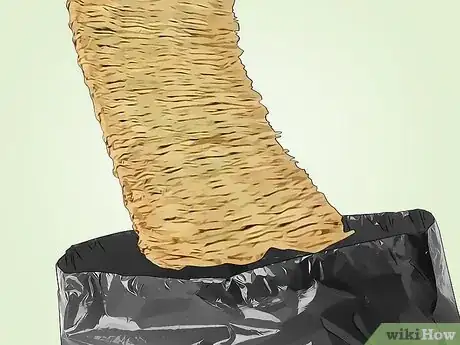
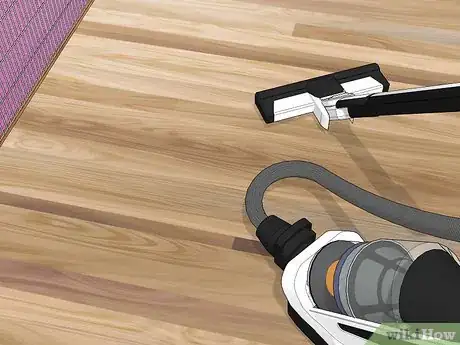
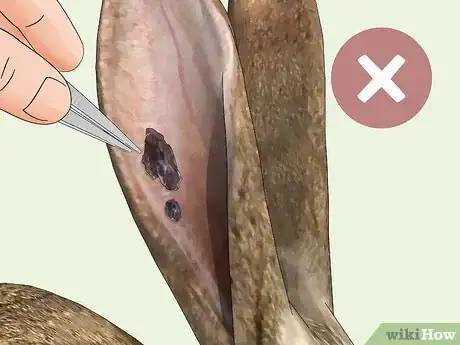
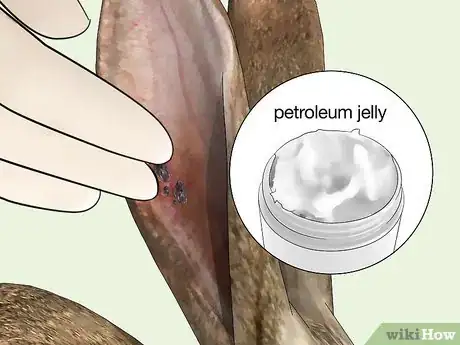
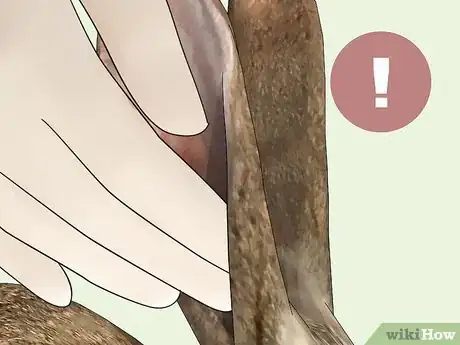
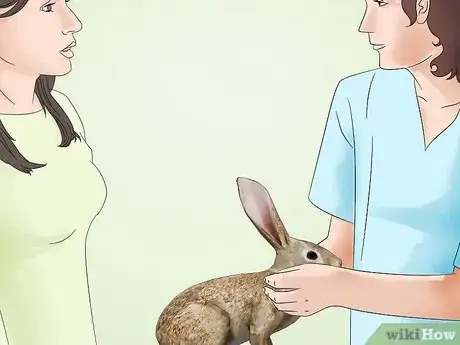
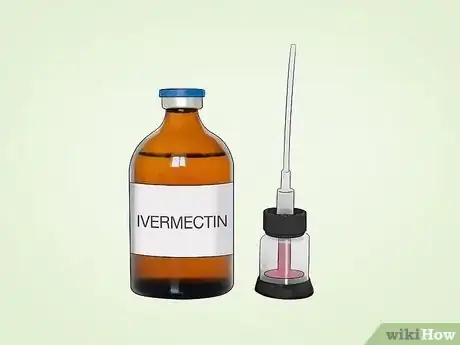
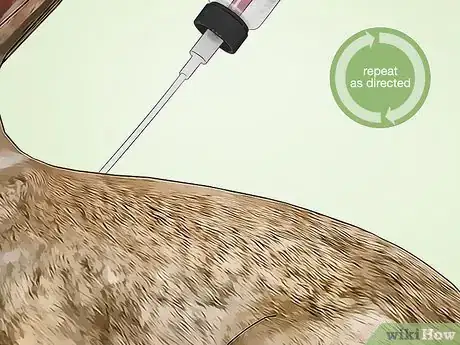

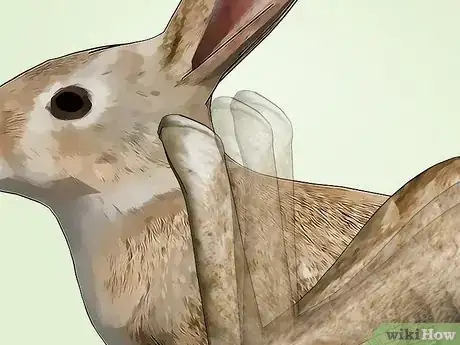
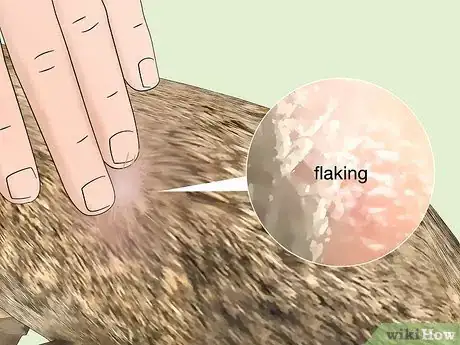
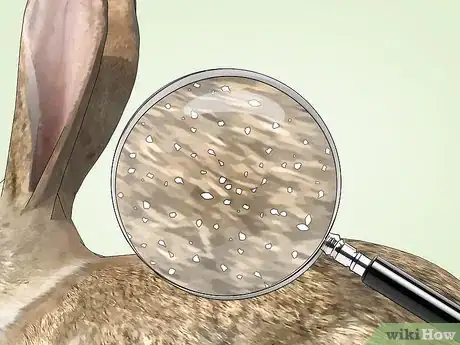
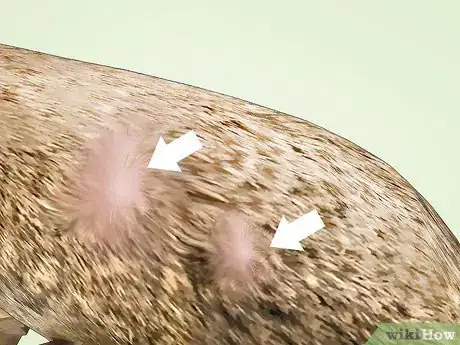
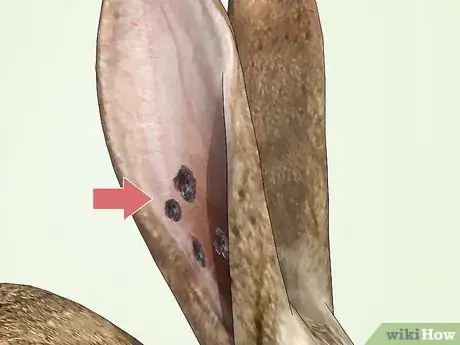
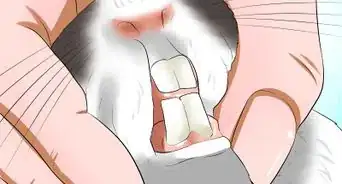

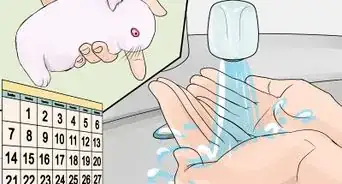

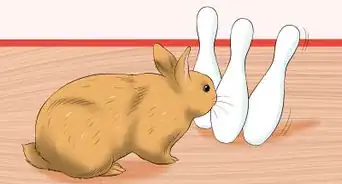
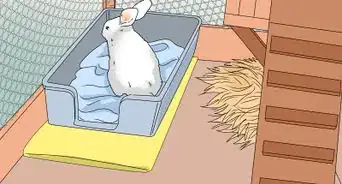
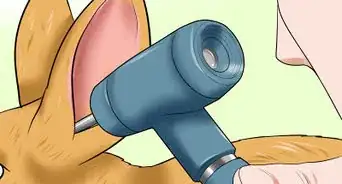
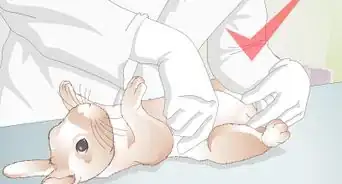
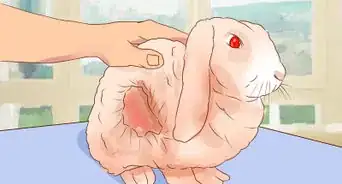

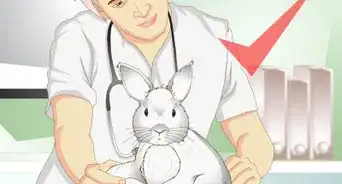

-in-Rabbits-Step-12.webp)
